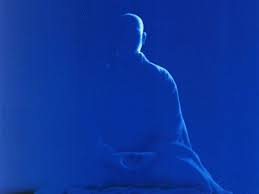In order to take advantage of information at other levels of awareness, we must learn to experience those other organizational systems with which we are usually unfamiliar.
Often the seeming meaningless of dreams is the result of our own ignorance of dream symbolism and organizational. For example: We may also misinterpret “revelatory” material because we try to structure it in reference to our ordinary conscious organizations. Many valuable and quite practical insights that could be utilized go astray, therefore. I am going to suggest, then, some simple exercises that will allow us to directly experience the “feel of our being” in a different way.
First of all, the various kinds of organizations used by the psyche can be compared at one level, at least, with different arts. Music is not better than the visual arts, for example. A sculpture, cannot be compared with a musical note. I am not saying, then, that one mode of organization is better than another. We have simply specialized in one of many arts of consciousness, and that one can be vastly enriched by knowledge and practice of the others.
First of all, these organization do not deal primarily with time at all, but with the emotions and associative processes. When we understand how our own associations work, then we will be in much better position to interpret our own dreams, for example, and finally to make as art of them.
There are several approaches to these exercises. The idea will be to experience emotions and events as much as possible outside of time sequences.
Cellular comprehension deals with probabilities and encompasses future and past, so at that level of activity time as we understand it does not exist. We are not consciously aware of such data, however. The psyche– at the other end of the scale, so to speak– is also free of time. Often, however, our own stream of consciousness leads us to think of events outside of their usual order. We may receive a letter from our Aunt Bessie, for example. In a matter of moments it may trigger us to think of events in out childhood, so that many mental images fly through our mind. We might wonder if our aunt will take an anticipated journey to Europe next year, and that thought might give birth to images of an imagined future. All of these thoughts and images will be colored by the emotions that are connected to the letter, and to all of the events with which we and or aunt have been involved.
I. The next time you find yourself in the middle of a like experience, with associations flowing freely, then become more area of what you’re doing. Try to sense the mobility involved. You will see that the events will not necessarily be structured according to usual time, but according to emotional content.
Thoughts of your own next birthday, for instance, may instantly lead you to think of past ones, or a series of birthday pictures may come to mind of your own twelfth birthday, your third, your seventh, in an order uniquely your own. That order will be determined by emotional associations– he same kind followed by the dreaming self.
What did you wear to work three days ago? What did you have for breakfast a week ago? Who sat next to you in kindergarten? What frightened you last? Are you afraid of sleep? Did your parents beat you? What did you do just after lunch yesterday? What color shoes did you wear three days ago? You remember only significant event or details. Your emotions trigger your memories, and they organize your associations. Your emotions are generated through your beliefs. They attach themselves so that certain beliefs and emotions seem almost synonymous.
II. The next time an opportunity arises, and you recognize the presence of a fairly strong emotion in yourself, then let your association’s flow. Events and images will spring to mind in an out-of-time context. Some such remembered events will make sense to you. You will clearly see the connection between the emotion and event, but others will not be so obvious. Experience the events as clearly as you can. When you are finished, purposefully alter the sequence. Remember an event, and then follow it with the memory of one that actually came earlier. Pretend that the future one came before the past one.
III. Now for another exercise. Imagine a very large painting, in which the most important events of your life are clearly depicted. First of all, see them as a series of scenes, arranged in small squares, to be viewed as you would, say, a comic-book page. The events must be of significance to you. If school graduation meant nothing, for example, do not paint it in. And, if it did mean something to you, then you can imagine yourself and your friends wearing your customized letterman jackets, holding the graduation frame, your parents cheering for you, and so on. Have the pictures begin at the upper left-hand corner, ending finally at the lower right-hand corner. Then completely switch the sequence, so that the earliest events are at the lower right-hand corner.
When you have done this, ask yourself which scene evokes the strongest emotional response. Tell yourself that it will become larger and larger, then mentally watch its size change. Certain dynamics are involved here, so that such a scene will also attract elements from other scenes. Allow those other scenes to break up, then. The main picture will attract elements from all of the others, until you end up with an entirely different picture– one made up of many of the smaller scenes, but united in an entirely new fashion. You must do this exercise, however, for simply reading about it will not give you the experience that comes from the actual exercise. Do it many times.
IV. Now: Consciously construct a dream. Tell yourself you are going to do so, and begin with the first thought or image that comes to mind. When you are finished with your daydream, then use free association to interpret it to yourself.
Some of us will meet with some resistance in these exercises. We will enjoy reading about them, but we will find all kind of excuses that prevent us from trying them ourselves. If we are honest, many of us will sense a reluctance, for certain qualities of consciousness are brought into play that run counter our usual conscious experience.
You might feel as if you are crossing your wires, so to speak, or stretching vaguely sensed psychic muscles. The purpose is not so much the perfect execution of such exercises as it is to involve us in a different mode of experience and of awareness that comes into being as we perform in the ways suggested. We have been taught not to mix, say, waking and dreaming conditions, not to daydream. We have been taught to focus all our attention clearly, ambitiously, energetically in a particular way– so daydreaming, or mixing and matching modes of consciousness, appears passive in a derogatory fashion, or inactive, or idle. “The devil finds work for idle hands”– an old Christian dictum.











